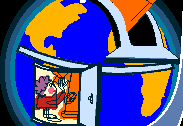


 |
 |
 |
more languages |


 |
about the project |  |
how to join the project |
 |
recourses and data |
 |
guest book |
Theres basing an international kid-observatory. The kids all around the world are united to solve global problems of the world with the power of science and their creativity. We know the future lies in the power of us and we will use this power to make the world better!
And such first problem is consumption of environmental resources at an alarming rate (like petroleum as energy source) and research in area of alternative energy source.
Theres a very simple suggestion: to use the sun as an alternative energy source. But its not so trivial as it would seem. The sun is very powerful energy source based on thermonuclear reactions. All the time the Earth lives it consumes and puts the sun-energy by. The international kid-observatory will research, how much energy the Earth gets from the sun (daily, yearly, in different latitudes).
In the project is used such school knowledge as relativity of mechanic moving; optic and photometry (physic); sun-moving in different latitudes (astronomy); polar coords, trigonometry, stereometry (math).
For this project you will need a compass, a watch and a luxmeter or some other devices measuring the intensity of sun-radiation.
The project procedure follows:
Didn't you know the science is fascinating enough? Well, you know this now! And you can be useful for all people of the World and for yourself of course because you invent your own future - you do participate the development of alternative energy source that's very important for preserving our environment for generations to follow ours.
We hope to see you in our observatory.
The KidProj International kid-observatory Project is Moderated by Andrew Gavrilow: gavrilov_an@list.ru